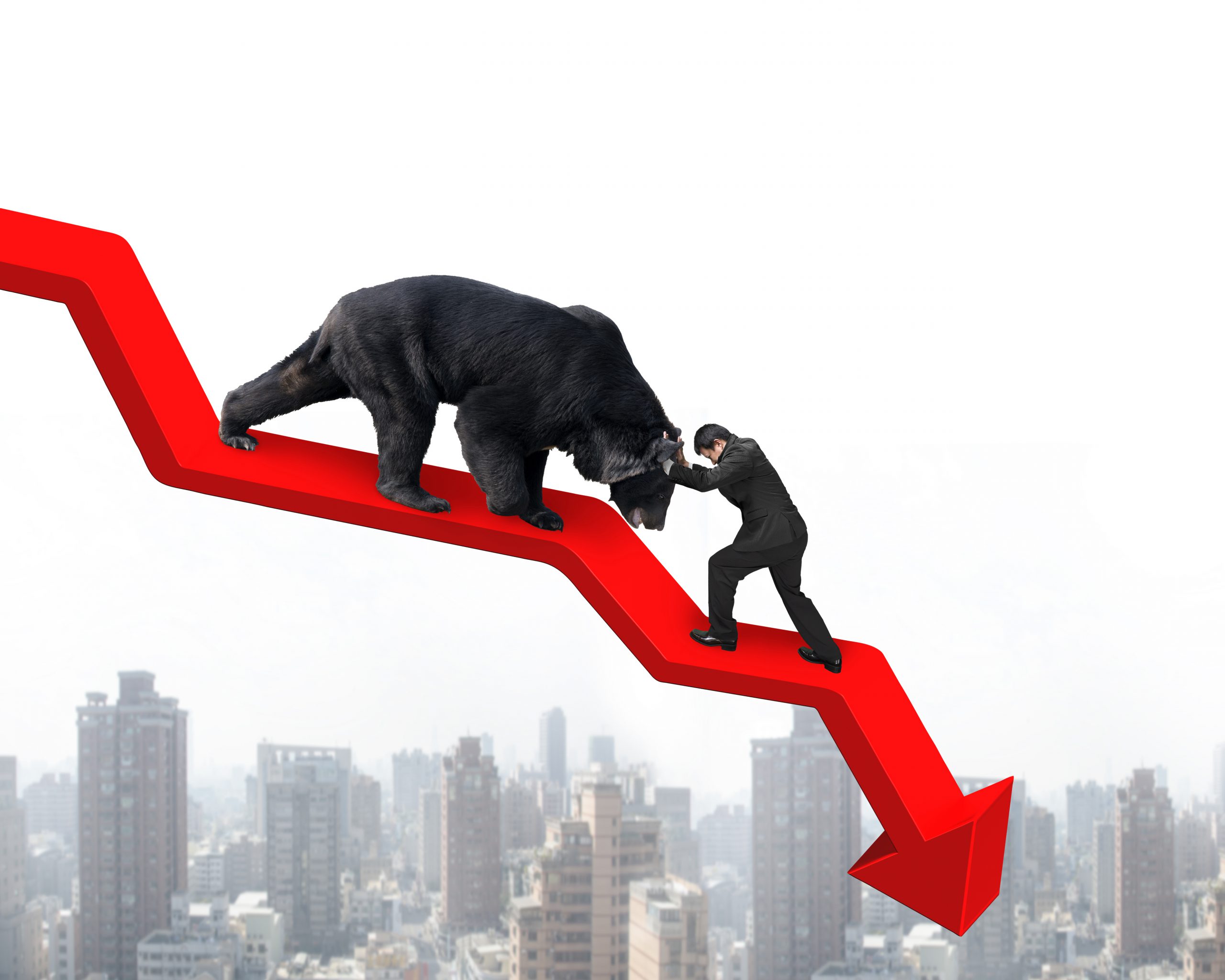Are bearish investors coming out of hibernation?
The bulls have taken the lead in 2023...but as more cards are turned over, it looks like the bears will once again take the pot. Let's discuss recent changes that point to more downside ahead for the stock market (SPY). Best of all, Steve Reitmeister, a 40-year investment veteran, will share a trading blueprint and his top 9 picks for charting a path to trading profits. Read on to learn more.
I have been bearish since May 2022. However, I have to admit that evidence from early 2023 has increased the odds of a potential return to a bull market.
This party is over!
Let's discuss the mounting evidence that bears are ready to come out of hibernation with many more downsides to follow. And yes, it will go hand in hand with a trading plan to stay on the safe side of the action.
Market Commentary
Plain and simple, stocks rallied on a false premise to start 2023.
These are signs of moderating inflation that could lead the Fed to end its rate hike earlier than expected. This soft landing scenario forced more investors to believe that the bottom had already been set and it was time to push stocks higher for the birth of the next bull market.
The Fed rejected this idea wholeheartedly at the February 1 meeting. They viewed inflation as too rigid and did not plan to change their hawkish course with higher rates in place until the end of the year.
At the time, the Bulls were clearly blowing on the cans of spray paint because they bought into the misconception that those statements were somehow accommodating. The best I can understand is that because Powell wasn't beating the podium and foaming at the mouth, he was sort of dovish.
Clearly false.
Since then, more and more investors have received the message that the rally at the start of the year was premature. Especially after Thursday, when the producer price index showed that inflation was much higher than expected.
I saw this event as strike 3 for the bulls, as it followed 2 other events showing inflation much higher than expected.
Strike 1 took place on Friday, February 3, when the monthly employment report was far too strong. Not just 517,000 jobs added when only 190,000 were expected. But even more vapid was the force of wage increases...which is exactly the kind of persistent inflation that Powell had warned of two days earlier.
Powell's subsequent interview at the DC Economic Forum was related to this event. There, he was asked what this robust jobs report meant for Fed policies. It couldn't have been clearer that this makes him even more belligerent.
Specifically, it will likely force the Fed to do 2 possible things. First, to push rates higher than the previous expected level of 5%. Second, keep those high rates in place longer than the previously announced end of the year. And maybe both!
This caused a very momentary sell off in stocks. But the bulls took another hit from their spray cans in hopes that the 2/14 CPI ratio would be a Valentine's Day gift to the bulls. Unfortunately, it was actually a deadly arrow through the heart with even more evidence that inflation is too hot.
This set the stage for last Thursday's PPI report. As already shared, it was a devastating Strike 3 for the bulls.
We heard this message loud and clear when we added two more inverse ETFs to our portfolio. It was a cautious move as the S&P 500 has slipped -2.9% since Thursday's open. Fortunately our 2 inverse ETFs are doing even better at +3.3% and +4.9%.
The curiosity at this point is whether the overall market is really ready to return to bearish territory. Or are we just exploring the bottom of the current S&P 500 (SPY) trading range between 4000 and 4200???
If the bears are truly back in command now, we would first see an extension of the recent selloff becoming a break below the 200-day moving average at 3,942. That would sound a FOMO-style alarm bell for many other investors reverse their mistaken bullish notions to Sell Now, Sell, SELL.
Other notable places on the way down would be:
3,855, 20% lower than all-time highs, reaffirming the outlook for a bear market.
3,491 October lows
3180 represents a 34% decline from all-time highs, which represents the average market decline during a bear market.
Let's not go too far ahead.
The thing is, the bulls took a few on the chin. They're not depressed...but they look pretty shaky.
At this point, we continue to monitor each new economic event to see what it tells us about the health of the economy as well as inflation and future Fed action.
The more bearish these inclinations are...the sooner we will reach some of these lower targets noted above...and the more money we will make on the way down given our portfolio construction for the recovery bear.. .

The bulls have taken the lead in 2023...but as more cards are turned over, it looks like the bears will once again take the pot. Let's discuss recent changes that point to more downside ahead for the stock market (SPY). Best of all, Steve Reitmeister, a 40-year investment veteran, will share a trading blueprint and his top 9 picks for charting a path to trading profits. Read on to learn more.
I have been bearish since May 2022. However, I have to admit that evidence from early 2023 has increased the odds of a potential return to a bull market.
This party is over!
Let's discuss the mounting evidence that bears are ready to come out of hibernation with many more downsides to follow. And yes, it will go hand in hand with a trading plan to stay on the safe side of the action.
Market Commentary
Plain and simple, stocks rallied on a false premise to start 2023.
These are signs of moderating inflation that could lead the Fed to end its rate hike earlier than expected. This soft landing scenario forced more investors to believe that the bottom had already been set and it was time to push stocks higher for the birth of the next bull market.
The Fed rejected this idea wholeheartedly at the February 1 meeting. They viewed inflation as too rigid and did not plan to change their hawkish course with higher rates in place until the end of the year.
At the time, the Bulls were clearly blowing on the cans of spray paint because they bought into the misconception that those statements were somehow accommodating. The best I can understand is that because Powell wasn't beating the podium and foaming at the mouth, he was sort of dovish.
Clearly false.
Since then, more and more investors have received the message that the rally at the start of the year was premature. Especially after Thursday, when the producer price index showed that inflation was much higher than expected.
I saw this event as strike 3 for the bulls, as it followed 2 other events showing inflation much higher than expected.
Strike 1 took place on Friday, February 3, when the monthly employment report was far too strong. Not just 517,000 jobs added when only 190,000 were expected. But even more vapid was the force of wage increases...which is exactly the kind of persistent inflation that Powell had warned of two days earlier.
Powell's subsequent interview at the DC Economic Forum was related to this event. There, he was asked what this robust jobs report meant for Fed policies. It couldn't have been clearer that this makes him even more belligerent.
Specifically, it will likely force the Fed to do 2 possible things. First, to push rates higher than the previous expected level of 5%. Second, keep those high rates in place longer than the previously announced end of the year. And maybe both!
This caused a very momentary sell off in stocks. But the bulls took another hit from their spray cans in hopes that the 2/14 CPI ratio would be a Valentine's Day gift to the bulls. Unfortunately, it was actually a deadly arrow through the heart with even more evidence that inflation is too hot.
This set the stage for last Thursday's PPI report. As already shared, it was a devastating Strike 3 for the bulls.
We heard this message loud and clear when we added two more inverse ETFs to our portfolio. It was a cautious move as the S&P 500 has slipped -2.9% since Thursday's open. Fortunately our 2 inverse ETFs are doing even better at +3.3% and +4.9%.
The curiosity at this point is whether the overall market is really ready to return to bearish territory. Or are we just exploring the bottom of the current S&P 500 (SPY) trading range between 4000 and 4200???
If the bears are truly back in command now, we would first see an extension of the recent selloff becoming a break below the 200-day moving average at 3,942. That would sound a FOMO-style alarm bell for many other investors reverse their mistaken bullish notions to Sell Now, Sell, SELL.
Other notable places on the way down would be:
3,855, 20% lower than all-time highs, reaffirming the outlook for a bear market.
3,491 October lows
3180 represents a 34% decline from all-time highs, which represents the average market decline during a bear market.
Let's not go too far ahead.
The thing is, the bulls took a few on the chin. They're not depressed...but they look pretty shaky.
At this point, we continue to monitor each new economic event to see what it tells us about the health of the economy as well as inflation and future Fed action.
The more bearish these inclinations are...the sooner we will reach some of these lower targets noted above...and the more money we will make on the way down given our portfolio construction for the recovery bear.. .
What's Your Reaction?















![Three of ID's top PR executives quit ad firm Powerhouse [EXCLUSIVE]](https://variety.com/wp-content/uploads/2023/02/ID-PR-Logo.jpg?#)







